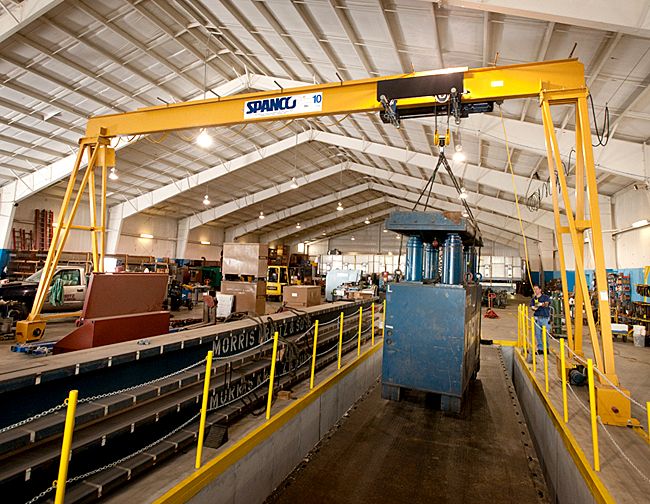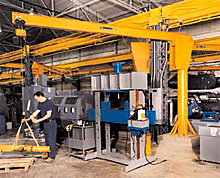Safety and Cranes: What You Need to Know
Cranes are ideal for many material handling applications, but require consistent practices for safe operations

The jib, gantry and bridge cranes used in material handling applications are typically smaller, lower capacity, and used with a much wider array of end effectors — magnetic connections, manipulators, bundlers and other specialized end effectors along with the standard hook mounts — than construction cranes, but many of the same safety and application issues are shared by both types of crane systems.
When it comes to safer crane operations, what are some steps you should take?

- Insist on training and certifications: This it the most critical step. In a construction environment, unauthorized operators who are unfamiliar or unqualified to run a crane are rarely tempted to do so. Since industrial cranes are smaller, and often in fixed locations, people who don’t understand them can be tempted to step in during a busy time and operate the system. This can be disastrous in the wrong circumstance, resulting in load or facility damage, or even personnel injuries. According to OSHA, “employers must permit only thoroughly trained and competent workers to operate cranes.”
- Be sure everyone knows load capacities: This again goes back to training. Using equipment outside its rated capacity is one of the chief reasons it fails, and this isn’t just for cranes (it applies to anything that bears weight). However, in the case of cranes, which suspend a heavy load under tension, the issue is critical. Be sure your crane, hoist and effectors are clearly marked with their capacity. Be sure that no load exceeding those capacities is loaded into the zone, and that everyone involved knows these limits. Since the rated capacity of a crane varies with boom lengths and radius, only people who understand these factors should be allowed to use this equipment. Load capacity charts should clearly be posted near the operator area, and be sure people are trained to understand situations where load types or other conditions may affect capacities.
- Know your load: Operators should not only know the weight of the load and the capacity of the crane. They should also be familiar with the load characteristics — its center of gravity, the way it reacts when suspended, lifted, or moved, and its general characteristics.
- Get specific with crane types and conditions: (1) Adjustable boom cranes should be clearly marked with boom angle indicators; (2) If a crane has a telescoping boom, and boom length alters the crane’s load capacity, post and train on how to determine safe boom lengths based on capacity; (3) If boom radius affects capacity, make sure everyone understands the issue.
- Inspections are mandatory: Plan for safety by frequently inspecting your cranes. OSHA’s guidelines mandate that “persons thoroughly familiar” with the crane should be charged with inspecting it. (Cisco-Eagle’s Field Operations group offers OSHA-certified crane & hoist inspectors). Crane activity (how many lifts), severity of use, and environmental conditions should determine the schedule of inspections. In general, it’s better to err on the side of more frequent inspections if you aren’t sure.
- What to inspect daily: Examine the critical parts of the crane every day. Your crane operators should be trained so that they can efficiently inspect the following, according to OSHA: “crane operating mechanisms, hooks, air, or hydraulic system components and other load-carrying components.” Check them for signs of maladjustment, deterioration, leaks, deformities or general operating damage. This is particularly important in materials handling operations where the operators may work directly with a suspended load on a hoist, manipulator, or air balancer system. Chains or ropes should be free of kinks and twists.
Tags: gantry crane, material handling cranes, balancers, effectors, hoists, cranes, jib crane
Scott Stone is Cisco-Eagle's Vice President of Marketing with 35 years of experience in material handling, warehousing and industrial operations. His work is published in multiple industry journals an websites on a variety of warehousing topics. He writes about automation, warehousing, safety, manufacturing and other areas of concern for industrial operations and those who operate them.



